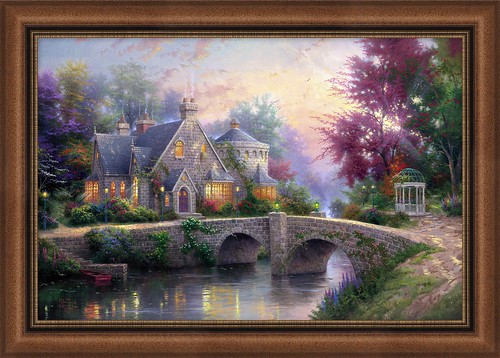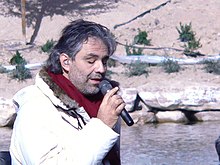I am very hesitating in writing this blog - I don't enjoy being critical, particularly to someone who just passed away or has emerged from adversaries, yet the ripples of his early death compelled me to address his legacy, however difficult the task might be.
Undeniably, American painter Thomas Kinkade (January 19, 1958 - April 6, 2012) had his vision and drive to achieve it and had left behind a huge presence, and one had to admire him for that. It was an achievement in a tall order.

However, what he had achieved, could hardly be called art, despite the fact that San Francisco Chronicle had reported that Kinkade works selling briskly since artist's death and what I overheard people's passing comments such as "at least he brought art to people."
The self-styled "Painter of Light" left a vast amount of paintings with glowing warm-lights setting off Hansel und Gretel type ginger bread houses, cottages, villages, and churches. One could never tell if he really believed in his vision or believed in the marketability of his vision. However, from a viewer's point of view, a critical one, his works were false representation of life and the world. They were as as saccharine and nutritious as Coca-Cola, and actually the opposite of truth. He had found much popularity amongst religious people, who had an affinity to his escapist messages. He had successfully branded his light to that from the God. Yet, his highlights over saturated pastel colors - sometimes, cynically hired "highlighters" would add by hands to mass-produced prints, became cliched very fast and worse, kitsch.
One could have just ignored his formulaic and seemingly harmless and occasionally charming dabble but his huge commercial success made this impossible. Not only his enterprise had siphoned away large portion of money available for art works which challenge, probe and stimulate, have much greater connection to the world we live in, his monetary success also conditioned many impressionable of thinking his efforts as high art. Thus my argument against the sentiment that he had "brought art to people". What he had achieved was bringing kitsch to the masses and ensuring them the kitsch was art and they ought to seek no further.
This reminded me of another vastly popular figure packaged as great artist - popular singer Andrea Bocelli. Here too, I am a bit hesitate in speaking out against him - a blind Italian who had learned to sing, and mimic the most demanding operatic singing and moved crowed with his agreeable voice and touching story, to the mass craving for uplifting sentiment or sentimentality.
 |
| Author:Dovywiarda |
If Bocelli hasn't been packaged as a classical/operatic singer, his presence as one of the most communicative singers would be mostly welcomed. But I cannot even say that for Kinkade. Only if his works were simple picturesque in an honest way.





No comments:
Post a Comment